-
 Bitcoin
Bitcoin $107,247.2038
-0.18% -
 Ethereum
Ethereum $2,424.7947
0.34% -
 Tether USDt
Tether USDt $1.0003
-0.02% -
 XRP
XRP $2.1171
-3.33% -
 BNB
BNB $645.6618
0.06% -
 Solana
Solana $141.5898
-1.32% -
 USDC
USDC $0.9998
0.00% -
 TRON
TRON $0.2710
-0.41% -
 Dogecoin
Dogecoin $0.1602
-2.99% -
 Cardano
Cardano $0.5553
-2.28% -
 Hyperliquid
Hyperliquid $36.3019
-2.42% -
 Bitcoin Cash
Bitcoin Cash $491.7212
2.04% -
 Chainlink
Chainlink $13.0810
-0.23% -
 Sui
Sui $2.6080
-5.06% -
 UNUS SED LEO
UNUS SED LEO $9.0040
-0.05% -
 Stellar
Stellar $0.2350
-3.06% -
 Avalanche
Avalanche $17.2294
-2.31% -
 Toncoin
Toncoin $2.8075
-1.05% -
 Shiba Inu
Shiba Inu $0.0...01121
-3.43% -
 Litecoin
Litecoin $84.2215
-0.32% -
 Hedera
Hedera $0.1429
-4.88% -
 Monero
Monero $312.2199
-0.90% -
 Dai
Dai $0.9997
-0.01% -
 Ethena USDe
Ethena USDe $0.9999
-0.02% -
 Polkadot
Polkadot $3.2973
-2.60% -
 Bitget Token
Bitget Token $4.4742
3.12% -
 Pi
Pi $0.5631
-10.10% -
 Uniswap
Uniswap $6.7817
-2.06% -
 Pepe
Pepe $0.0...09252
-3.74% -
 Aave
Aave $251.3830
-2.24%
Is the shortening of the weekly MACD green column a sign of a daily rebound?
A shrinking weekly MACD green column signals weakening bullish momentum, suggesting a potential pullback or consolidation in crypto markets.
Jun 27, 2025 at 10:22 am
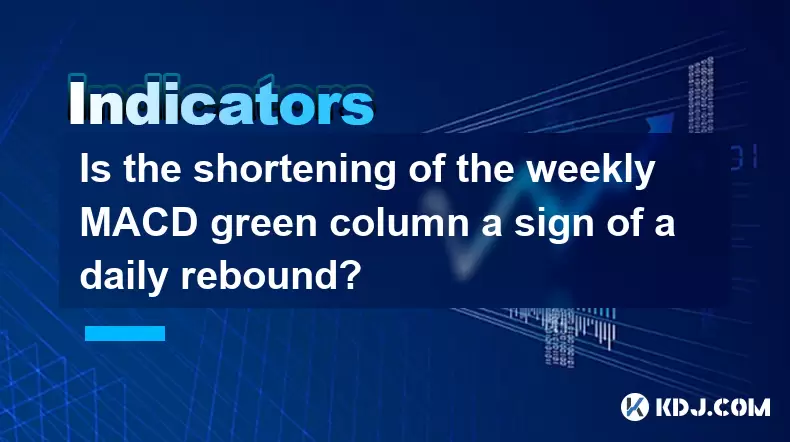
Understanding the Weekly MACD Green Column
The Moving Average Convergence Divergence (MACD) is a popular technical indicator used by traders to identify potential trend reversals and momentum shifts in financial markets, including cryptocurrencies. The green column in the MACD histogram represents the positive difference between the MACD line and the signal line. When this green column starts to shorten on the weekly chart, it may indicate that the bullish momentum is weakening.
In the context of cryptocurrency trading, where volatility is high and trends can change rapidly, understanding the implications of a shrinking green column becomes critical. A shorter green bar suggests that the upward pressure is decreasing, which could be an early warning sign of a possible pullback or consolidation phase.
What Does a Shrinking Weekly MACD Green Column Mean?
A declining green histogram on the weekly MACD does not necessarily mean that a daily rebound will occur immediately. However, it does signal a reduction in buying pressure, which may lead to a pause in the uptrend. In crypto markets, where sentiment plays a significant role, such a shift can sometimes trigger profit-taking or short-term corrections.
It’s important to note that while the weekly chart provides a broader view, it should not be interpreted in isolation. Traders often combine it with daily or 4-hour charts to get a clearer picture of immediate price action. For example, if the weekly MACD green bars are shrinking but the daily RSI hasn’t reached overbought levels yet, a daily rebound might still be premature.
- Check for divergence: If prices are rising but the MACD green bars are getting smaller, it could indicate bearish divergence.
- Look at volume: Declining volume alongside a shrinking green column may reinforce the idea of weakening momentum.
- Watch key support levels: If the price approaches a known support zone while the weekly MACD weakens, a rebound becomes more likely.
Daily Rebound: Is It Linked to Weekly MACD Changes?
A daily rebound refers to a short-term reversal in price direction within a single trading day. While the weekly MACD offers a macro perspective, it doesn’t directly cause intraday movements. However, when the weekly momentum starts to wane, it can set the stage for a correction, especially if other indicators align.
For instance, if the weekly MACD green column shrinks and the daily MACD crosses below its signal line, it could signal a near-term top. This confluence increases the probability of a daily pullback or consolidation, which might present opportunities for countertrend trades.
Cryptocurrency traders often use this combination to time entries:
- Identify resistance zones on the daily chart where selling pressure might emerge.
- Wait for confirmation signals, such as bearish candlestick patterns or a breakdown below a key moving average.
- Use stop-loss orders to manage risk when anticipating a rebound or pullback.
How to Analyze Weekly and Daily MACD Together
Combining the weekly and daily MACD analysis allows traders to filter out noise and focus on higher-probability setups. Here’s how you can do it step-by-step:
- Open both the weekly and daily charts of the cryptocurrency you’re analyzing.
- Locate the MACD histogram on each chart and observe the color and length of the bars.
- Compare the direction of the histograms. If both are green but the weekly one is shortening, proceed cautiously.
- Look for crossovers on the daily chart that might indicate a shift in momentum.
- Overlay trendlines or Fibonacci retracement levels to assess potential support/resistance areas where a rebound might occur.
This multi-timeframe approach helps avoid false signals and improves trade accuracy, particularly in highly volatile assets like Bitcoin, Ethereum, or altcoins.
Common Pitfalls and Misinterpretations
Traders often misread the significance of a shrinking weekly MACD green column due to several common mistakes:
- Relying solely on MACD without context: Ignoring volume, order flow, or news events can lead to incorrect conclusions.
- Assuming a direct link between weekly and daily moves: Short-term price action isn't always dictated by long-term momentum indicators.
- Misinterpreting the color of the histogram: A green histogram that's getting shorter doesn't mean the trend has reversed — it only indicates slowing bullish momentum.
- Overtrading based on partial signals: Waiting for multiple confirmations before entering a trade can prevent unnecessary losses.
Avoiding these pitfalls requires discipline and a well-structured analytical framework that includes both technical and fundamental inputs.
Frequently Asked Questions
Q: Can a shrinking weekly MACD green column ever be bullish?
Yes, if the price continues to rise despite the shrinking green bars, it may suggest that the market is consolidating rather than reversing. In some cases, this can precede a strong breakout once the consolidation ends.
Q: Should I close my position if the weekly MACD green column starts to shrink?
Not necessarily. Closing positions should depend on your strategy and risk tolerance. Some traders take partial profits, while others wait for clearer signs of a reversal before exiting.
Q: How reliable is the MACD compared to other indicators like RSI or Bollinger Bands?
The MACD works best in trending markets, while RSI excels at identifying overbought or oversold conditions. Bollinger Bands highlight volatility. Using them together often gives a more complete picture than relying on any single tool.
Q: What timeframes work best with MACD in crypto trading?
Weekly and daily charts are ideal for assessing overall trend strength and timing entries. Shorter timeframes like 1-hour or 15-minute charts can help with precise entry points but are more prone to noise and false signals.
Disclaimer:info@kdj.com
The information provided is not trading advice. kdj.com does not assume any responsibility for any investments made based on the information provided in this article. Cryptocurrencies are highly volatile and it is highly recommended that you invest with caution after thorough research!
If you believe that the content used on this website infringes your copyright, please contact us immediately (info@kdj.com) and we will delete it promptly.
- TRUMP Token Tumult: Liquidity Exit Sparks Crash Fears!
- 2025-06-27 12:30:12
- Thanking Strangers for Loans: From Etiquette to Crypto Innovations
- 2025-06-27 14:10:18
- Elementary, My Dear Collector: Sherlock Holmes Coins Fetch High Prices!
- 2025-06-27 12:35:12
- Sui Growth: Blockchain Ecosystem Expansion in 2025
- 2025-06-27 12:47:14
- Coinbase Stock Soars to New Highs: Is the Rally Sustainable?
- 2025-06-27 12:47:14
- Coinbase Stock Soars to New Highs: What's Driving the Rally?
- 2025-06-27 13:10:17
Related knowledge

Does the CCI indicator break through +200 mean that it is seriously overbought?
Jun 27,2025 at 01:08pm
Understanding the CCI Indicator and Its Relevance in Cryptocurrency TradingThe Commodity Channel Index (CCI) is a technical analysis tool widely used by traders in various financial markets, including cryptocurrency. Originally developed by Donald Lambert for commodities, it has since been adopted across asset classes to identify overbought or oversold ...

How lethal is the death cross of EXPMA12 and 50 lines?
Jun 27,2025 at 11:15am
Understanding the Death Cross in EXPMA IndicatorsThe death cross is a technical analysis pattern that signals a potential bearish trend reversal. In the context of the EXPMA (Exponential Moving Average), particularly when analyzing the crossover between the EXPMA12 and EXPMA50 lines, traders often interpret this as a strong sell signal. The death cross ...
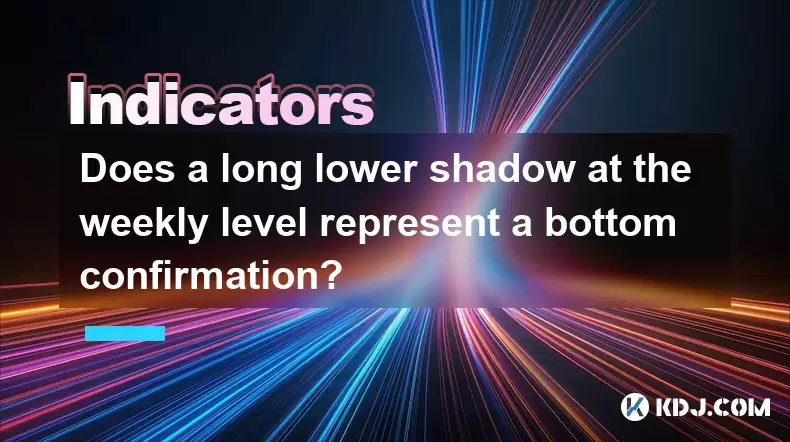
Does a long lower shadow at the weekly level represent a bottom confirmation?
Jun 27,2025 at 10:56am
Understanding the Weekly Lower Shadow in Candlestick AnalysisIn cryptocurrency trading, weekly candlestick patterns are often scrutinized for potential trend reversals. A long lower shadow at the weekly level indicates that during the week, sellers pushed prices down significantly but were met with strong buying pressure that closed the candle near its ...
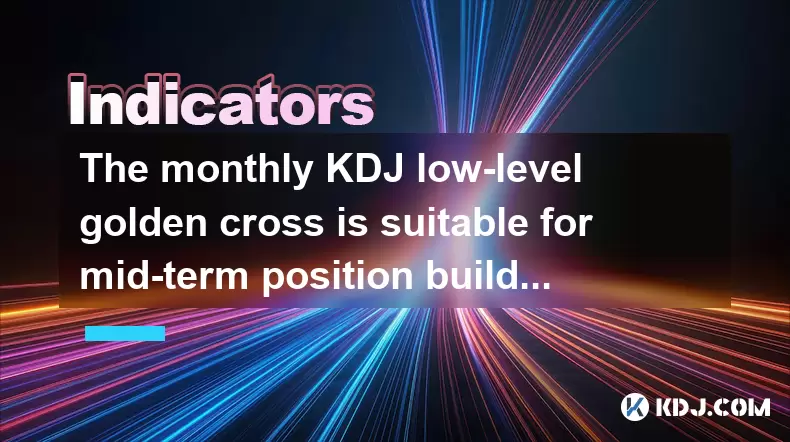
The monthly KDJ low-level golden cross is suitable for mid-term position building?
Jun 27,2025 at 03:14am
Understanding the Monthly KDJ IndicatorThe KDJ indicator, also known as the stochastic oscillator, is a momentum tool widely used in technical analysis within the cryptocurrency market. It consists of three lines: the K line, the D line, and the J line. These lines help traders identify overbought or oversold conditions, potential trend reversals, and e...
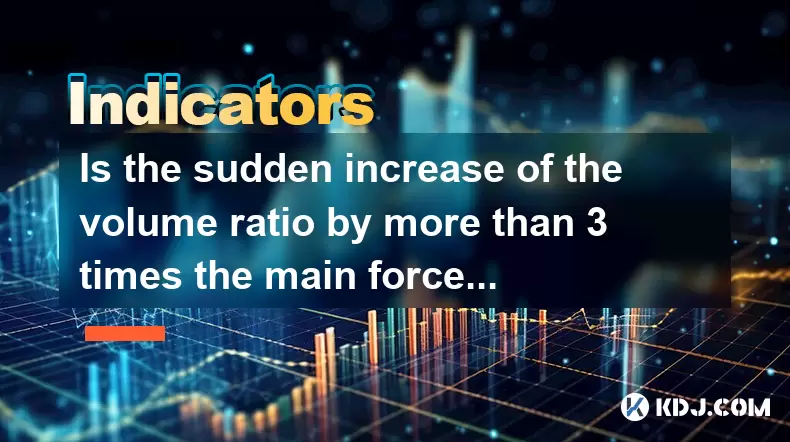
Is the sudden increase of the volume ratio by more than 3 times the main force entering the market?
Jun 27,2025 at 12:57pm
Understanding Volume Ratio in Cryptocurrency TradingIn cryptocurrency trading, the volume ratio refers to the comparison between the current trading volume and the average volume over a specific period, usually 20 or 30 days. This metric helps traders identify unusual market activity that could signal potential price movements. When the volume ratio inc...
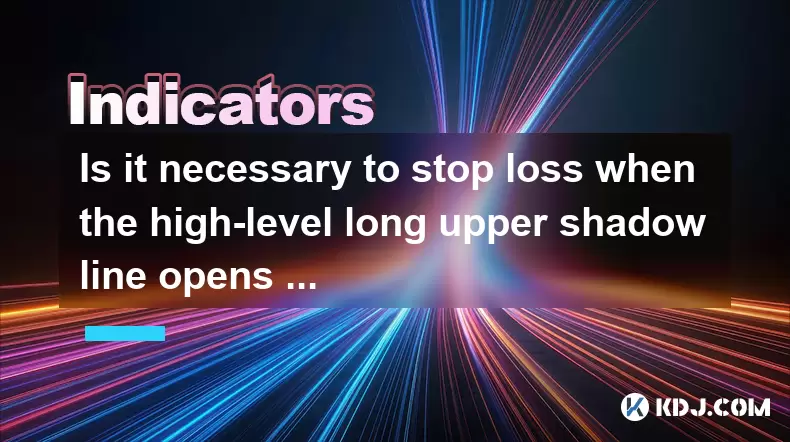
Is it necessary to stop loss when the high-level long upper shadow line opens low the next day?
Jun 27,2025 at 08:22am
Understanding the High-Level Long Upper Shadow LineIn technical analysis, a long upper shadow line refers to a candlestick pattern where the price moves significantly higher during the session but closes much lower, forming a long wick on the top. When this occurs at a high level, it suggests strong resistance and potential reversal. This type of candle...

Does the CCI indicator break through +200 mean that it is seriously overbought?
Jun 27,2025 at 01:08pm
Understanding the CCI Indicator and Its Relevance in Cryptocurrency TradingThe Commodity Channel Index (CCI) is a technical analysis tool widely used by traders in various financial markets, including cryptocurrency. Originally developed by Donald Lambert for commodities, it has since been adopted across asset classes to identify overbought or oversold ...

How lethal is the death cross of EXPMA12 and 50 lines?
Jun 27,2025 at 11:15am
Understanding the Death Cross in EXPMA IndicatorsThe death cross is a technical analysis pattern that signals a potential bearish trend reversal. In the context of the EXPMA (Exponential Moving Average), particularly when analyzing the crossover between the EXPMA12 and EXPMA50 lines, traders often interpret this as a strong sell signal. The death cross ...

Does a long lower shadow at the weekly level represent a bottom confirmation?
Jun 27,2025 at 10:56am
Understanding the Weekly Lower Shadow in Candlestick AnalysisIn cryptocurrency trading, weekly candlestick patterns are often scrutinized for potential trend reversals. A long lower shadow at the weekly level indicates that during the week, sellers pushed prices down significantly but were met with strong buying pressure that closed the candle near its ...

The monthly KDJ low-level golden cross is suitable for mid-term position building?
Jun 27,2025 at 03:14am
Understanding the Monthly KDJ IndicatorThe KDJ indicator, also known as the stochastic oscillator, is a momentum tool widely used in technical analysis within the cryptocurrency market. It consists of three lines: the K line, the D line, and the J line. These lines help traders identify overbought or oversold conditions, potential trend reversals, and e...

Is the sudden increase of the volume ratio by more than 3 times the main force entering the market?
Jun 27,2025 at 12:57pm
Understanding Volume Ratio in Cryptocurrency TradingIn cryptocurrency trading, the volume ratio refers to the comparison between the current trading volume and the average volume over a specific period, usually 20 or 30 days. This metric helps traders identify unusual market activity that could signal potential price movements. When the volume ratio inc...

Is it necessary to stop loss when the high-level long upper shadow line opens low the next day?
Jun 27,2025 at 08:22am
Understanding the High-Level Long Upper Shadow LineIn technical analysis, a long upper shadow line refers to a candlestick pattern where the price moves significantly higher during the session but closes much lower, forming a long wick on the top. When this occurs at a high level, it suggests strong resistance and potential reversal. This type of candle...
See all articles























































































